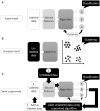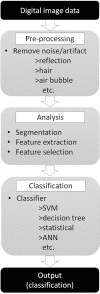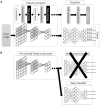The Possibility of Deep Learning-Based, Computer-Aided Skin Tumor Classifiers
- PMID: 31508420
- PMCID: PMC6719629
- DOI: 10.3389/fmed.2019.00191
The Possibility of Deep Learning-Based, Computer-Aided Skin Tumor Classifiers
Abstract
The incidence of skin tumors has steadily increased. Although most are benign and do not affect survival, some of the more malignant skin tumors present a lethal threat if a delay in diagnosis permits them to become advanced. Ideally, an inspection by an expert dermatologist would accurately detect malignant skin tumors in the early stage; however, it is not practical for every single patient to receive intensive screening by dermatologists. To overcome this issue, many studies are ongoing to develop dermatologist-level, computer-aided diagnostics. Whereas, many systems that can classify dermoscopic images at this dermatologist-equivalent level have been reported, a much fewer number of systems that can classify conventional clinical images have been reported thus far. Recently, the introduction of deep-learning technology, a method that automatically extracts a set of representative features for further classification has dramatically improved classification efficacy. This new technology has the potential to improve the computer classification accuracy of conventional clinical images to the level of skilled dermatologists. In this review, this new technology and present development of computer-aided skin tumor classifiers will be summarized.
Keywords: artificial intelligence; clinical image; convolutional neural network; deep learning; dermoscopy; skin tumor classifier.
Figures






References
-
- United States Cancer Statistics: Data Visualiztions. Available online at: https://gis.cdc.gov/Cancer/USCS/DataViz.html (accessed May 28, 2019).
-
- Gruber SB, Armstrong BK. Cutaneous and ocular melanoma. In: Schottenfeld D, Fraumeni JF. editors. Cancer Epidemiology and Prevention. New York, NY: Oxford University Press; (2006). p. 1196–229. 10.1093/acprof:oso/9780195149616.003.0063 - DOI
Publication types
LinkOut - more resources
Full Text Sources

